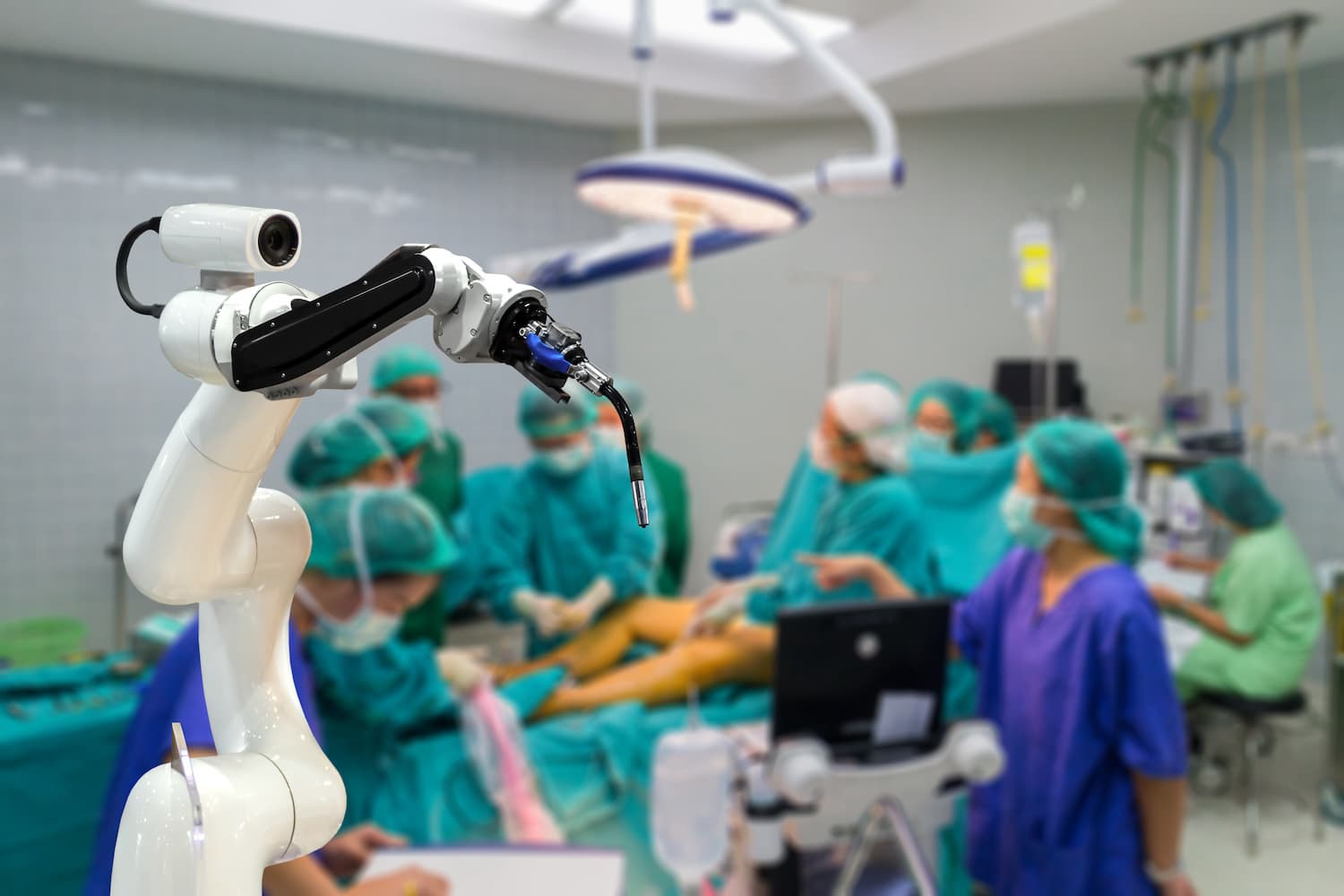The healthcare industry is ever-changing and evolving—there are always new trends to keep up with and advancements that lead to incredible benefits to new and existing healthcare options. In 2022, it’s no different. There are going to be some significant changes in the coming year, and these are some of the top trends to look out for:
- Changes from the ongoing COVID-19 pandemic
- A focus on health equity
- Healthcare data management challenges
- Battling clinician burnout
- Wearable technologies used in healthcare
- Focus on preventative care
- A rise in overall wellness and self-care options
- Shifts in the approach towards mental health care
- More at-home care options
- New healthcare initiatives to improve efficiency and quality
- Precision health focus
- More adoption of artificial intelligence
- Advances in medical nanotechnology
Table of Contents
Why Do Healthcare Trends Change So Often?
The healthcare industry is constantly changing because there are always new breakthroughs, technologies, and treatments being developed. Additionally, healthcare is a very complex system with many different moving parts. All of these factors contribute to healthcare trends constantly shifting.
Another major impact on healthcare is the evolving needs of patients. Because of advancements in healthcare, some patients may require less intensive or invasive procedures for chronic disease and can instead manage most of their disease from home via telemedicine.
Another good example is the increase in self-care and wellness that is very preventative towards things like heart disease and obesity. As these needs for care decline, the landscape of healthcare as we know it also changes.
This can be both good and bad—on the one hand, it’s great that there are always new advancements and treatments being developed. On the other hand, it can be challenging to keep up with all the changes. It’s essential to stay informed about healthcare trends to make the best decisions for your health.
The Top Healthcare Trends in 2022
In 2022, we are piggybacking off one of the most severe challenges in healthcare we’ve ever experienced in our lifetimes—the COVID-19 pandemic. This has very much changed the landscape of how healthcare is provided and how we access it on a global scale.
But that isn’t the only healthcare trend shift we’ll see. From more technology options to a rise in telemedicine, you can expect to see many changes in healthcare, including, but not limited to, the following:
1 – The COVID-19 Pandemic Continues to Change How We Receive Healthcare
The pandemic taught us a lot about healthcare. We learned how fragile safe access to healthcare can be, the struggles faced by those with pre-existing conditions, and how virtual access to healthcare is vital (and often preferred). A few trends that for sure stemmed from the pandemic include:
- How people get elective surgeries. Many people may have put off or altogether canceled elective surgeries. This may be because they spent more time thinking about it and weighing the options of whether it’s a good idea or not.
- Changes in the supply chain. The pandemic highlighted how important it is to have a healthcare system that can adapt to change. The supply chain was challenged in a way it had never been before, and many healthcare organizations scrambled to find ways to keep up with demand. Now, providers can better plan for changes and shifts in the supply chain and more carefully plan.
- More options for digital health. With social distancing and limited in-person appointments, the healthcare landscape shifted more towards online and virtual care. Digital health is now a widely used convenience vs. a nice-to-have for a few people. Now, it’s almost preferred over in-person, especially for those with disabilities or who live far away from clinics and hospitals (for simple appointments).
- More use of drones and robots. Everything from scanning paperwork to disinfecting clinics, robots can do just about everything and that won’t be slowing down anytime soon. We’ve learned that we don’t need to have so many people exposed to illness or hazardous working conditions when technology allows robotics to carry out certain jobs.
2 – Health Equity Continues to Be an Issue for Providing Well Rounded Care
Health equity is achieved when everyone has access to healthcare despite social status, money, or demographics. Minority and disadvantaged groups have been widely disparaged when it comes to getting easy and affordable access to healthcare. The pandemic made that abundantly more clear, and with more accessibility to virtual appointments and other advancements, it may help improve health equity.
3 – Healthcare Data is Insurmountable and Requires New Innovations to Gather and Manage
The gathering and organization of healthcare data have been an ever-changing mess. From the old days of paper files and microfiche to nearly instantaneous data input, housing healthcare information securely has gotten better but has a ways to go.
While it remains imperfect, larger advancements in voice recognition and machine learning have helped streamline the process, catching issues earlier and making it easier than ever to quickly access medical records anytime, anywhere.
4 – Clinician Burnout and Negative Well-Being is On the Rise
In recent studies, nearly 50% of clinicians at some point have noted clinician burnout. This is due to many reasons:
- EHR (electronic health records) systems (data entry)
- Time pressured situations
- Little control over the pace of their job
- Balancing family responsibilities
- Chaotic work environments
And the pandemic put even more pressure and lack of balance on physicians and nurses in the field. It’s essential to have a plan in place to help manage and decrease clinician burnout because it can lead to errors, decreased productivity, and an overall negative healthcare experience.
5 – Wearable Technologies like Fitbits and Apple Watches Can be Utilized for Health Management
As telemedicine becomes more and more prevalent, doctors can leverage wearable technologies people already have to assist in chronic disease management. These wearable technologies can monitor heart rate, oxygen levels, cardiovascular health, movement, and sleep.
People who have experienced heart attacks or other issues can easily manage and track their vitals and share that data with their providers for more streamlined care. Then, patients don’t have to purchase expensive heart rate monitors through a clinic setting and instead use the devices they already have.
6 – More Focus on Preventative Care
Preventative care doesn’t just mean preventative visits to the doctor. It also means eating healthy, not smoking, getting exercise, and preventing an onslaught of diseases by keeping your body healthy.
It wasn’t that long ago that we didn’t even know the harmful effects of smoking cigarettes or eating heavily processed foods. Now, that knowledge has allowed people to take steps towards avoiding things like heart disease and obesity that can lead to diabetes, stroke, or heart attacks.
7 – People Choosing More Holistic Options and Self-Care
In addition to those preventive measures for staying healthy, people also choose additional self-care and holistic practices for their health. Yoga, for example, is excellent for stress management and mental health. Supplements and CBD are often preferred for boosting mood and treating anxiety over pharmaceutical medications.
8 – Mental Health Awareness Making Giant Leaps
The healthcare industry has long been behind in its acknowledgment of mental health. It’s only been in recent years that healthcare providers are taking mental health more seriously and offering services to help people cope with depression, anxiety, PTSD, and other disorders.
This is a great healthcare trend because it means more people are getting the help they need without judgment or difficulty. And with more and easier access to mental health care, there has been a positive correlation to declined suicide rates.
9 – With Telemedicine, There are Far More At-Home Options
Gone are the days when you had to take off work or miss school to go to the doctor. With telemedicine, people can see their healthcare providers virtually from anywhere. This can be great for people who have a sinus infection or other viral infection who don’t feel well enough to sit in urgent care but want to quickly get a prescription to help.
This is great for people who have difficulty getting to the doctor or who live in rural areas. It’s also great for people who have chronic illnesses or who need to see a specialist but don’t want to deal with the hassle of traveling.
10 – Healthcare Clinics and Hospitals Focus on New Initiatives to Improve Efficiency and Quality of Care
With the healthcare industry under so much pressure to improve, healthcare clinics and hospitals are looking for new initiatives that will help them improve efficiency and quality of care. This can include:
- improved electronic health records processes
- streamlined communication between providers
- socially distanced appointments
- virtual visits for follow-ups
- more focus on patient education and engagement
Healthcare providers need to stay up-to-date on these initiatives to provide a variety of levels of care that meet the needs and preferences of patients.
11 – A Major Focus on Precision Health
Precision healthy does away with an overarching model of care that doesn’t work for everyone. Instead, precision looks at people’s environments, genetics, lifestyles, etc., and creates a more precise treatment plan that considers those specific differences. Those matter when it comes to how someone got sick, how they’ll be treated, and the outlook of their treatment altogether.
12 – Artificial Intelligence Continues to Be Implemented and Adopted
One of the healthcare industry’s favorite new tools is artificial intelligence (AI). AI can be used for various tasks in healthcare, from automating administrative tasks to providing insights about patient care.
For example, some hospitals use AI to help with detecting cancer and other diseases earlier. AI can also be used to streamline how data is collected and stored. AI can catch mistakes that humans may miss and ensure everything is tracked in detail.
13 – Incredible Advances in Medical Nanotechnology
Medical nanotechnology uses microscopic particles, called nanoparticles, to create new medical treatments. Nanoparticles are so small that they can be injected into the body and target specific cells or tissues.
This healthcare trend is still in its early stages but shows a lot of promise. Researchers are hopeful that medical advancements and the use of nanotechnology can help deliver drugs to the body, locate tumors much earlier than ever before, and even improve the clarity of medical imaging.
Keeping Up With The Most Up-to-Date Healthcare Trends
At Pops Diabetes, we try our best to stay in the know and share that knowledge with the world. Our blog is an excellent resource for trends and up-and-coming information regarding diabetes management and other healthcare trends.
And if you’re someone who wants to embrace new and improved diabetes care tools, reach out to us today. We can ensure you get the absolute best use of today’s technologies to improve your overall wellness while living with diabetes.












